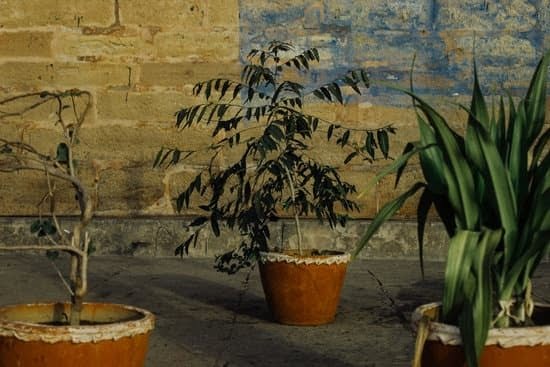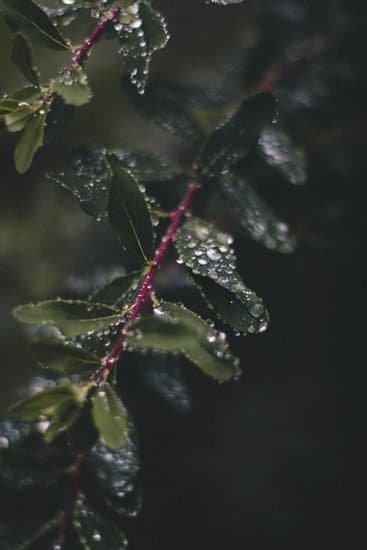Are you looking for green landscape ideas to transform your outdoor space into an eco-friendly oasis? Look no further. In this article, we will explore the concept of green landscaping and provide tips on how to create a sustainable and environmentally friendly yard.
From the types of plants to incorporate in your landscape to water conservation and natural pest control methods, we’ve got you covered. Embracing a sustainable lifestyle through green landscaping ideas is not only beneficial for the environment but also for your overall well-being.
Green landscaping involves designing and maintaining a yard that is not only aesthetically pleasing but also environmentally responsible. By using sustainable practices, such as incorporating native plants and conserving water, you can create a beautiful landscape that has a positive impact on the environment. In this article, we will delve into the benefits of green landscaping, types of plants suitable for a green landscape, and how to incorporate sustainable practices into your outdoor space.
Whether you are an experienced gardener or just starting out with landscaping, this article will provide you with valuable information on how to create a green landscape that is both visually appealing and environmentally friendly. Stay tuned as we explore various tips and techniques for designing, maintaining, and enjoying a green landscape that contributes to a healthier planet.
Benefits of Green Landscaping
Green landscaping offers a multitude of benefits that go beyond just creating a beautiful outdoor space. One of the primary advantages of green landscaping is its positive impact on the environment. By utilizing sustainable practices and native plants, green landscapes can help reduce water consumption, minimize chemical usage, and decrease carbon emissions. This not only contributes to the overall health of the planet but also promotes biodiversity and supports local ecosystems.
In addition to its environmental benefits, green landscaping also has numerous advantages for homeowners. One notable benefit is the potential cost savings associated with a well-maintained green landscape. With careful planning and plant selection, homeowners can significantly reduce their water bills by opting for drought-resistant plants that require minimal irrigation. Furthermore, by implementing natural pest control methods and eliminating the need for chemical pesticides, homeowners can save money on expensive pest management services.
Moreover, green landscapes have been shown to provide significant mental and physical health benefits for individuals. Studies have indicated that spending time in natural environments can reduce stress levels, improve overall well-being, and increase feelings of happiness.
By creating a green landscape in their own backyard, homeowners can enjoy these therapeutic benefits without having to travel far from home. Ultimately, embracing green landscape ideas not only enhances the visual appeal of outdoor spaces but also enriches the lives of those who inhabit them.
Types of Plants for a Green Landscape
When it comes to creating a green landscape, choosing the right types of plants is crucial. Not only do these plants add beauty to your outdoor space, but they also play a key role in promoting sustainability and environmental conservation. Here are some types of plants that you can incorporate into your green landscape design:
- Native Plants: These are plant species that are naturally found in your specific region. By incorporating native plants into your landscape, you can help maintain the local ecosystem and provide habitat for local wildlife.
- Drought-Resistant Plants: Opt for plant varieties that require minimal watering, especially in dry and arid regions. Succulents, cacti, and lavender are great options for adding color and texture to your green landscape while conserving water.
- Perennials: Perennial plants are a sustainable choice as they come back year after year, reducing the need for replanting. Examples of perennial flowers include black-eyed Susans, coneflowers, and daylilies.
In addition to these plant options, consider incorporating edible plants such as herbs, fruits, and vegetables into your green landscape. Not only do they contribute to a more sustainable lifestyle by providing fresh produce at home, but they also add diversity to your garden.
Furthermore, when selecting plants for your green landscape, be mindful of their maintenance requirements. Choose low-maintenance plants that thrive in your climate and soil conditions, reducing the need for chemical fertilizers or pesticides. By carefully selecting the types of plants for your green landscape, you can create a vibrant and eco-friendly outdoor space that supports biodiversity and conservation efforts.
Incorporating Sustainable Practices
Use of Native Plants
One of the best ways to create a sustainable and eco-friendly landscape is by using native plants. These are species that are naturally occurring in your region and therefore require less water, fertilizer, and pesticides to thrive. By incorporating native plants into your green landscape design, you can help conserve water, reduce maintenance needs, and provide natural habitat for local wildlife.
Organic Fertilization and Pest Control
When maintaining a green landscape, it’s important to avoid the use of synthetic fertilizers and harmful pesticides. Instead, opt for organic fertilization methods such as composting and natural pest control solutions like beneficial insects and companion planting. These practices not only contribute to a healthier environment but also ensure the safety of your family and pets.
Efficient Irrigation Systems
Another key aspect of sustainable landscaping is the use of efficient irrigation systems. Consider installing drip irrigation or rainwater harvesting systems to minimize water waste and promote conservation. Additionally, utilizing smart irrigation controllers can help optimize water usage by adjusting watering schedules based on weather conditions and plant needs.
By incorporating these sustainable practices into your green landscape ideas, you can create a beautiful outdoor space that is not only visually appealing but also environmentally responsible. Whether it’s through the use of native plants, organic fertilization methods, or efficient irrigation systems, embracing sustainability in landscaping is a rewarding endeavor that benefits both your property and the planet as a whole.
Green Landscape Design Tips
When it comes to creating a sustainable and beautiful outdoor space, green landscape design tips can make all the difference. From choosing the right plants to implementing eco-friendly practices, there are many ways to create a green landscape that benefits both the environment and your home. Here are some essential tips for designing a green landscape that you can consider for your own outdoor space.
One of the key green landscape ideas is to prioritize native plants in your design. Native plants are well-adapted to the local climate and soil conditions, making them more resilient and low-maintenance. By incorporating native plants into your landscape, you can reduce the need for excessive watering, fertilizers, and pesticides, ultimately reducing your environmental impact.
In addition to choosing native plants, incorporating water-efficient landscaping techniques is essential for a sustainable outdoor space. Consider installing a rainwater harvesting system or drip irrigation to minimize water waste and ensure that your landscape stays lush and healthy without excessive water consumption. Implementing permeable paving materials can also help reduce runoff and improve groundwater recharge in your yard.
Furthermore, when designing a green landscape, it’s important to consider renewable energy sources such as solar lighting or water features powered by solar panels. These eco-friendly design elements not only reduce energy consumption but also add an attractive and modern touch to your outdoor space. By incorporating these green landscape design tips into your outdoor space, you can create a beautiful and sustainable environment that benefits both your home and the planet.
Water Conservation in Landscaping
Choosing Drought-Tolerant Plants
One of the key elements of creating a water-efficient landscape is to choose plants that are adapted to dry conditions. By selecting drought-tolerant plants such as succulents, cacti, lavender, and ornamental grasses, you can significantly reduce the amount of water needed for irrigation. These types of plants not only require less water but also contribute to a visually appealing green landscape.
Implementing Efficient Irrigation Systems
Another essential aspect of water conservation in landscaping is the implementation of efficient irrigation systems. Drip irrigation and soaker hoses deliver water directly to the roots of plants, reducing wastage through evaporation and runoff. Additionally, installing rain barrels or cisterns to collect rainwater can provide a sustainable source of irrigation water for your green landscape.
Xeriscaping Techniques
Xeriscaping is a landscaping technique that focuses on using low-water and native plants, along with mulching and efficient watering methods. By incorporating xeriscaping principles into your landscape design, you can create a beautiful and environmentally friendly outdoor space that requires minimal water usage. This approach not only promotes greenery but also reduces maintenance needs, making it an ideal choice for homeowners looking for sustainable green landscape ideas.
Natural Pest Control Methods
As homeowners and gardeners become more conscious of the impact of chemicals on the environment, natural pest control methods are gaining popularity in green landscaping. These methods involve using natural, non-toxic alternatives to keep pests at bay without harming the ecosystem. One common natural pest control method is companion planting, where certain plants are grown together to deter pests or attract beneficial insects. For example, planting marigolds alongside vegetables can help repel nematodes and other harmful pests.
Another effective natural pest control method is using insecticidal soaps and horticultural oils, which suffocate soft-bodied insects like aphids, mites, and thrips without leaving harmful residues in the soil. These products are readily available at garden centers and can be safely used in green landscaping practices. Additionally, introducing predator insects such as ladybugs and lacewings into the garden can help keep pest populations in check without the need for chemical pesticides.
Implementing these natural pest control methods not only contributes to a healthier environment but also promotes a more sustainable approach to landscaping. By reducing reliance on chemical pesticides, green landscape ideas foster a balanced ecosystem that supports biodiversity and long-term environmental health.
| Natural Pest Control Methods | Green Landscaping Benefits |
|---|---|
| Companion planting | Reduces reliance on chemical pesticides |
| Insecticidal soaps and horticultural oils | Promotes a balanced ecosystem |
| Predator insects introduction | Fosters biodiversity and long-term environmental health |
DIY Green Landscape Projects
One of the best ways to incorporate green landscape ideas into your outdoor space is by taking on do-it-yourself (DIY) projects. Not only can DIY projects save you money, but they also allow you to personalize your landscape with sustainability in mind. From creating a composting area to building raised garden beds, there are countless projects that can contribute to a greener and more eco-friendly landscape.
To start, consider implementing a rain barrel system to collect and store rainwater for later use in your garden. This not only reduces water consumption but also helps prevent stormwater runoff, ultimately benefiting the environment. Additionally, constructing a vertical garden using recycled materials such as pallets or old containers can add a unique touch to your landscape while promoting sustainable gardening practices.
Another DIY project that aligns with green landscaping is building a solar-powered pathway or patio lighting system. By harnessing energy from the sun, you can illuminate your outdoor areas without relying on traditional electricity sources, reducing your carbon footprint while enhancing the aesthetics of your landscape. These projects not only contribute to a more sustainable way of living but also provide an opportunity for creative expression and hands-on engagement with nature.
Furthermore, consider building birdhouses or installing bee-friendly habitats in your yard to support local wildlife and ecosystem biodiversity. By providing shelter and food sources for these creatures, you can create a harmonious balance within your green landscape while actively participating in conservation efforts. These DIY projects not only enhance the visual appeal of your outdoor space but also foster environmental stewardship and ecological awareness within your community.
Maintenance of a Green Landscape
Maintaining a green landscape is essential for preserving the beauty and sustainability of your outdoor space. Regular maintenance not only keeps your garden looking its best but also ensures that it continues to thrive in an eco-friendly manner. Here are some key tips for maintaining a green landscape that will help you uphold a sustainable and environmentally-conscious approach to landscaping.
One of the most important aspects of maintaining a green landscape is proper watering and irrigation. Overwatering can not only be wasteful but also harmful to plants, while underwatering can lead to stress and damage.
To conserve water, consider installing a drip irrigation system or using rain barrels to collect rainwater for use in watering your plants. Additionally, incorporating native plants into your landscape design can help reduce the need for excessive watering, as these plants are well-adapted to the local climate and soil conditions.
Regular pruning and trimming of plants is another key element of green landscape maintenance. Pruning helps promote healthy growth, improves air circulation, and prevents overcrowding, which can lead to disease and pest infestations. When pruning, be sure to use sharp, clean tools to make precise cuts that will promote fast healing of the plants.
Avoid using chemical fertilizers or pesticides in your garden. Instead, opt for organic alternatives such as compost and natural pest control methods like introducing beneficial insects or using homemade insecticidal soaps.
By following these maintenance tips, you can ensure that your green landscape remains healthy, vibrant, and sustainable for years to come. Additionally, staying committed to eco-friendly practices in your landscaping efforts not only benefits the environment but also contributes to creating a more beautiful and harmonious outdoor space for you and your community to enjoy.
Conclusion
In conclusion, embracing green landscaping ideas is not only beneficial for the environment but also for our overall well-being. By choosing to incorporate sustainable practices, using water conservation techniques, and opting for natural pest control methods, we can contribute to a healthier and more eco-friendly environment.
It’s important to understand that the types of plants you choose for your green landscape can make a significant difference in its overall sustainability. Whether it’s native plants, drought-resistant varieties, or low-maintenance options, selecting the right flora is key to creating a thriving green landscape.
Additionally, implementing DIY green landscape projects can be a fun and rewarding way to take a hands-on approach to creating a sustainable outdoor space. From building compost bins to installing rain barrels for water conservation, there are plenty of creative ways to make your green landscape ideas come to life. By maintaining and nurturing our green landscapes, we can truly embrace a sustainable lifestyle and contribute to making the world a better place for future generations.
Frequently Asked Questions
What Are the Green Landscape Techniques?
Green landscape techniques focus on sustainable and eco-friendly practices to maintain outdoor spaces. This can include using native plants, minimizing water usage through efficient irrigation systems, implementing organic pest control methods, and incorporating renewable materials into hardscaping.
How Can I Make My Yard More Environmentally Friendly?
A yard can be made more environmentally friendly by reducing the use of chemical fertilizers and pesticides, opting for drought-resistant plants that require less water, incorporating composting to reduce waste and improve soil health, and using permeable surfaces to minimize runoff and allow water to infiltrate the ground.
What Is the Best Color for Landscaping?
The best color for landscaping often depends on personal preference and the overall aesthetic goals of the outdoor space. However, natural and earthy tones like greens, browns, and tans are popular choices as they blend well with the surrounding environment and provide a sense of harmony.
Additionally, incorporating pops of color with flowers or foliage can add visual interest while maintaining a connection to nature.

Welcome to my gardening blog! I am passionate about plants and enjoy sharing my knowledge and experiences with others. In this blog, I will write about everything related to gardening, from tips on how to get started to updates on my own garden projects.





